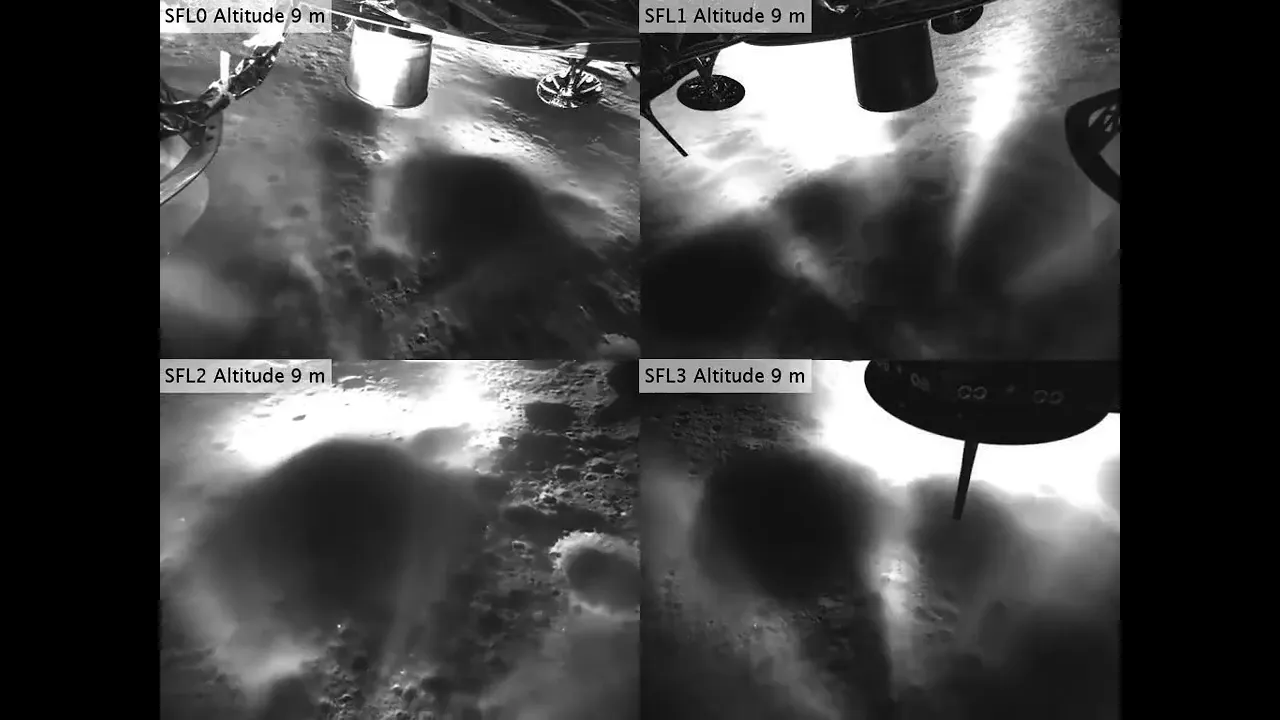NASA Cameras on Blue Ghost Capture ‘First-of-its-Kind’ Footage of Moon Landing


NASA cameras on the Blue Ghost spacecraft, which successfully completed a lunar landing, have captured incredible, close-up footage of its dramatic touchdown on the Moon.
Firefly Aerospace’s Blue Ghost Mission 1 made its historic lunar landing on March 2.
Firefly is only the second private company to achieve a soft lunar landing and the Blue Ghost spacecraft is carrying 10 NASA science instruments — including one called Stereo Cameras for Lunar-Plume Surface Studies (SCALPSS).
SCALPSS was designed to document how a spacecraft’s thruster plumes interact with lunar dirt and rock during touchdown. It includes six cameras in total. Four of them have a short focal length, providing a wide field of view, while the other two have a longer focal length.
‘First-of-its-kind Footage’
In a news release on Thursday, NASA recently revealed that SCALPSS successfully captured “first-of-its-kind” footage of Blue Ghost’s dusty descent and landing in the Mare Crisium, a volcanic basin on the Moon’s near side.
The sequence begins when the Blue Ghost spacecraft is about 91 feet above the surface, showing its thrusters interacting with the Moon’s surface at around 49 feet. As the lander gets closer, the thruster plumes kick up lunar dust and debris. After the lander touches down, the thrusters shut off, the dust settles, and the surface around the lander becomes visible.
The footage, which consists of 3,000 frames, was captured at 8 frames per second by SCALPSS four short-focal-length cameras.
This unprecedented sequence will be a key piece of data for future lunar missions. It will help NASA understand how engine plumes interact with the Moon’s regolith and how such plumes could impact nearby spacecraft or infrastructure. This data will be especially valuable for NASA’s Artemis program, which aims to increase lunar exploration in the coming years.
“Although the data is still preliminary, the 3000-plus images we captured appear to contain exactly the type of information we were hoping for in order to better understand plume-surface interaction and learn how to accurately model the phenomenon based on the number, size, thrust, and configuration of the engines,” Rob Maddock, SCALPSS project manager, says in NASA’s news release.
Image credits: All photos by NASA/Olivia Tyrrell.
Source link




